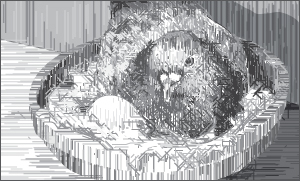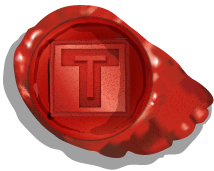
Managing the Breeders
Published:
Comments: 2 so far
It is our goal to have all our birds in such excellent health that no unplanned medication is required at any time during the year. So, the following is how we have chosen to pursue and maintain health. This is not intended to be all inclusive and it may or may not work for you. It works for us as we are successful at maintaining excellent health.
Obviously, from time to time a bird gets sick and must be treated. When we find a sick bird, it is immediately isolated and placed in sick bay. The bird is treated for whatever sickness is diagnosed. Depending on the diagnosis, the bird may or may not be returned to the loft. It is not returned to the loft until it recovers completely.
NOTE: Every time a new bird is added to our loft, that bird is placed in isolation (sick bay) for a minimum of 10 days. This is done 100% of the time. Even a bird that is ours that has been at another loft, and is returned to our loft, goes through the same treatment. At a minimum we treat them with terramycin plus vitamins for 10 days. Additionally, we give them a 100 mg Meditrich (metronidazole) cancer tablet and a Mediworm tablet. Typically, canker and worm medications are not given at the same time. The canker pill is usually given when they arrive. The worm tablet is given about a week later when they have an empty crop.
We have a very simple system
We do not medicate during the breeding season. Typically, except for “The Cure,” no medication is used or required throughout the year. A routine is followed that helps ensure the birds remain healthy. Following are the various supplements and products that are provided:
- Vitamins
- Apple Cider Vinegar
- Grit
- Minerals
- Clean Water
- Clean Feed
- Clean Nest Bowls
Vitamins
We place vitamins in the water twice per week on Monday and Thursday. We use Wins More. It is a good, clean, easily dissolvable, general purpose vitamin. It is our opinion that no other vitamin supplement is required for the breeders or sale birds.
Apple Cider Vinegar
We place apple cider vinegar in the drinking water Tuesday, Wednesday and Friday. We use 1-2 tablespoons per gallon. We do have the water dripping on these days so the vinegar concentration is decreasing throughout the day. The purpose of the vinegar is to help provide a slightly acidic drinking water, which we believe is good for the birds digestive system.
Grit
Grit is provided, free choice, at all times to all birds. (Note: We do remove the grit when giving the “mycin” drugs, i.e., terramycin, aureomycin, etc.) We combine several different grits in order to provide as many mineral and stone options as possible. The grit should be high in calcium, provide a good variety of “stones,” and be clean and dry. We currently combine, in equal parts, the following:
- Heritage Acres Hi-Calcium grit
- Heritage Acres High Performance grit
- Colombine/Versele-Laga Grit + Redstone
Minerals
A mixture of minerals is provided, free choice at all times. We currently use the following:
- Minerals block of various types (Vanhee, Beyers, plus others)
- Colombine – White Pickstone (high in calcium)
- We also like to include APC Biocal (when available)
NOTE: We provide Natural Granulated Floor Dressing (anti-coccidiosis) in a separated pan for the birds to pick in, free choice. This helps satisfy their need to forage for minerals and stones.
Clean Water
Clean water is absolutely critical. We use well water, so we do not have a chlorine problem. We change the water daily, without exception. Our water containers (pans) are made of stainless steel and designed so that as the water drips into the pan continually, it overflows through a downspout. This method both maintains the water level and keeps the water clean as the dust and floating debris is constantly skimmed off the top. When vitamins or medication is added to the water, the water drip is turned off so the vitamin or medication concentration remains constant.
Twice a week, the day following vitamins, each water pan is cleaned with Clorox to ensure unwanted bacteria are eliminated and the water is always as clean as we can provide. After cleaning with Clorox, the pans are rinsed to remove the Clorox residue.
Clean Feed
We make an effort to purchase the best feed available. The feed must be clean and have the right combinations of grains to provide the nutrition required to keep the breeders healthy and to raise healthy babies. For many years we have used Heritage Acres Feed from Canada. The feed they provide has a greater variety of seeds and grains that are not typically available in most other feeds that we have access to. They also carry various individual seeds and grains so that we can choose to add whatever protein, fiber, carbohydrates or fats we think the birds need at different times during the year…or race season.
During the breeding season the birds have access to feed and water 24/7. Both grain and pellets are available free-choice. The lights remain on in the halls all night. The lofts are not bright, but there is enough light for the birds to move about in the loft throughout the night.
When the breeder hens are unmated they are fed breeder mix plus 17-20% barley. Barley is added to help keep weight off the hens and decrease the protein percentage. When paired, all the breeders receive the normal 16% protein breeder mix without barley. When feeding youngsters, the breeders receive the normal 16% protein breeder mix with the frequent addition of some Austrian peas, safflower, hemp & canola to increase the protein and fat.
Clean Nest Bowls
We use plastic nest bowls and place nest felts in the bowls. We prefer the brown/tan nest pads that are ¼ to 3/8” thick. While we do place pine needles in the loft for the birds to use as nest material, using the nest pads makes the pine needles functionally unnecessary. Many of the birds do like to use the pine needles, many do not. For the older birds it provides exercise flying back and forth between the nest and the floor many times to place the pine needles in the nest. Pine needles are acidic and a slightly acidic environment is good for the birds as it helps cut down on parasites and helps prohibit the growth of “bad” bacteria. We change the nest pads as often as necessary to ensure the youngsters have a relatively clean nest.
Fostering Eggs
We foster eggs from most of our breeders (especially the older hens and/or older pairs) so we can get more rounds off the best, proven cocks and save the energy of the older birds. In order to foster the eggs, we must maintain 30-50 pair of foster birds. One polygamous cock requires a minimum of 6-foster pair. Each year we choose 4-cocks that we place on the polygamous system. The polygamous loft is 5’ wide x 5-1/2’ deep x 7’ tall with 3-nest boxes that are 18” wide x 3’ long x 16” tall with feed and water in each one. An opaque plastic sheet covers the front of each nest box, allowing light in, but not allowing the hens to see out. Each cock will have 3-hens at a time. Additionally, we have 24 individual breeding lofts (3’ wide x 5-1/2’ deep x 7’ tall). Eggs are timed so there is almost always a place to transfer breeder eggs to foster birds. It is our preference to foster eggs to pairs that have laid the same day, or a day or two, after the breeding pairs; however, within 3 days either way will work.
All eggs are candled between 6 & 10 days. If eggs are good they are of course allowed to hatch. If they are not good the eggs are either tossed and the hen is allowed to lay again, or the hen is removed and a new hen is introduced to the cock.
Frequency of Allowing the Hens to Lay
We allow our younger hens to lay once a month during the breeding season. The older hens, five years and older, are allowed to lay once every 6-8 weeks during the breeding season. If the older hens are not having any trouble producing perfect eggs, the frequency may be increased. If the hens do not produce essentially perfect eggs, they will not be used a second time during the same season. If the eggs are fertilized but do not hatch, the hens are typically only tried once again.
Every time a hen is separated from her mate, she is given a calcium pill.
For those pairs that raise youngsters, a second nest bowl is given to them after the 1st round has been banded. Typically, the birds that are kept together will lay approximately once a month.
Youngsters
Youngsters are banded 5 – 7 days after hatching. They are weaned when the feathers on their body under their wings are filled in. Weaning usually occurs 21 – 23 days after the youngsters hatch. When they are weaned, each youngster will be given a 100 mg Meditrich (metronidazole) canker tablet, receive a PMV shot, and be sprayed for parasites using a solution of PermectrinTM and water. 100% of all youngsters are treated the same way. However, if we are certain a bird will be shipped to a one loft race, we will not give a PMV shot to that specific bird. All one loft races we participate in will vaccinate for PMV as soon as the birds arrive at the loft. One loft race birds are shipped after we are sure they are eating and drinking well. Usually that will be about a week after weaning.

2 Responses to Managing the Breeders